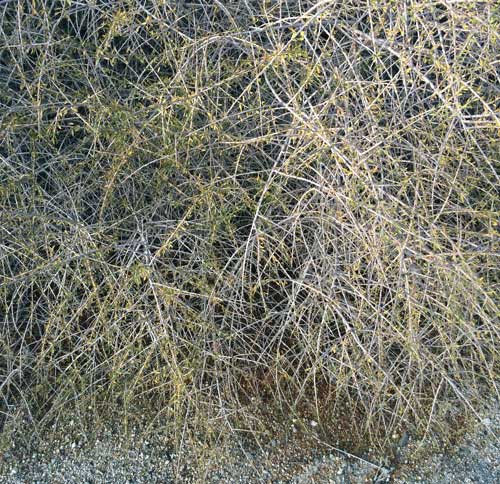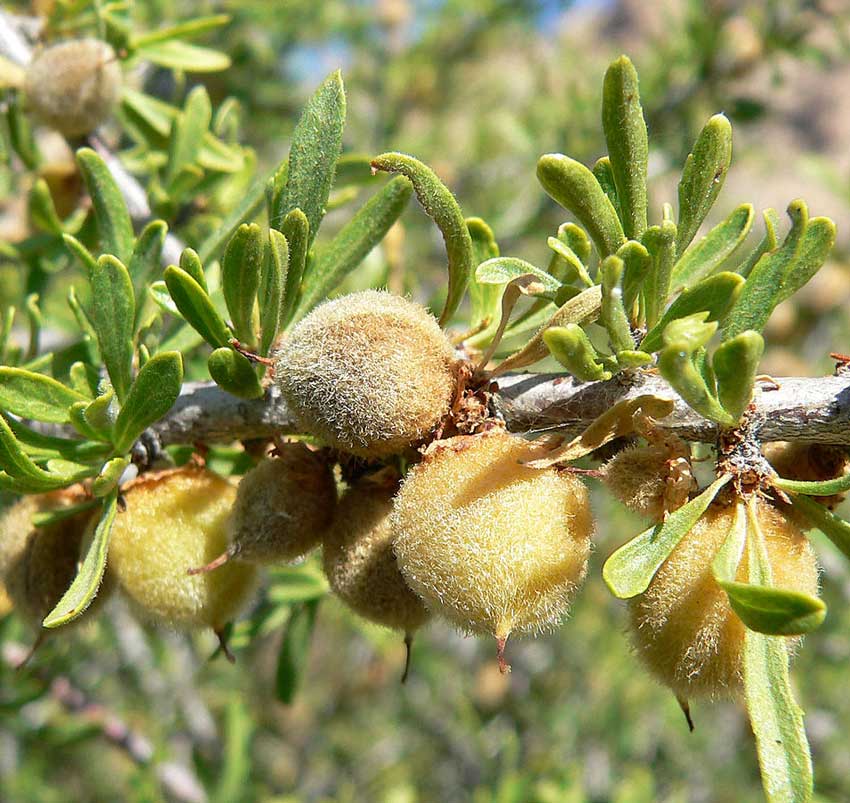Ethnobotany of southern California native plants:
Desert Almond (Prunus fasciculata)
Desert Almond (Prunus fasciculata)
Desert almond is a drupe from the Rosaceae family. This spiny, woody shrub grows in the southwestern states as well as throughout northern Baja. Desert almond is densely branched and found along sandy or rocky soil on desert slopes.
This shrub does produce a fleshy edible fruit, however this almond was not favored by most Native American people. Most preferred the desert peach or the holly-leaved cherry.
Desert Almond is modified to withstand the dry, desert heat. It’s leaves have tiny hairs on its surface to reduce water loss.
As far as we know, this plant has never been cultivated domestically.
The Kawaiisu, a Native American group from the southern California Tehachapi Valley, used desert almond twigs when making arrows. They fitted the twigs into the hollow stems of carizzo grass mainshafts.
Kawaiisu people also applied desert almond towards fire making. The branches made a good drill in a bow-drill fire set-up.
There is some archaeological evidence that desert almond seeds were considered a delicacy by the Cahuilla people of the Mojave desert. They pounded the almonds into flour and leached the plant material to make it edible. This leaching would be necessary, as the almonds contain a certain amount of cyanide, a toxic chemical.

The densely branched desert almond.
Reference:
Bean, Lowell John and Katherine Siva Saubel 1972 Temalpakh (From the Earth); Cahuilla Indian Knowledge and Usage of Plants. Banning, CA. Malki Museum Press (p. 119)
Zigmond, Maurice L. 1981 Kawaiisu Ethnobotany. Salt Lake City. University of Utah Press (p. 55)
Please return to our main Ethnobotany of southern California page.
On our main ethnobotany page, we present a clickable list of the southern California native plants that became a part of the culture of Native Americans and early European settlers. These plants were used for medicine, food, shelter, drink, tools and art.
Warning: The information about plants on this website is intended for general educational purposes only. The author of this website accepts no responsibility for problems arising from the user’s misidentification, misuse, or use of plants. Please read the full TERMS associated with this website.

